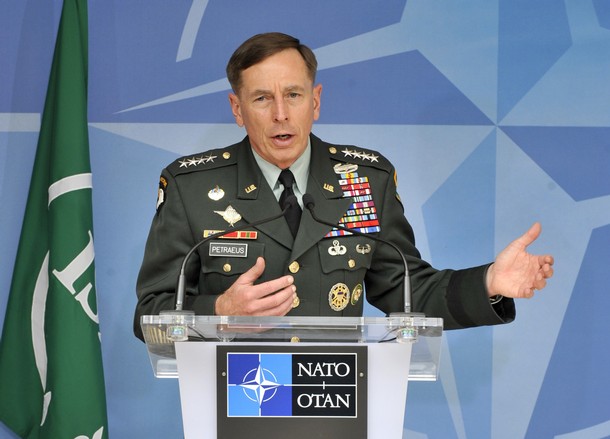
From Rajiv Chandrasekaran, the Washington Post: In his first six weeks as the top U.S. and NATO commander in Afghanistan, Gen. David H. Petraeus has seen insurgent attacks on coalition forces spike to record levels, violence metastasize to previously stable areas, and the country’s president undercut anti-corruption units backed by Washington.
But after burrowing into operations here and traveling to the far reaches of this country, Petraeus has concluded that the U.S. strategy to win the nearly nine-year-old war is "fundamentally sound. …"
He remains supportive of President Obama‘s decision to begin withdrawing troops next July, but he said it is far too early to determine the size of the drawdown.
"We are doing everything we can to achieve progress as rapidly as we can without rushing to failure," Petraeus said in his wood-paneled office at the NATO headquarters in Kabul. "We’re keenly aware that this has been ongoing for approaching nine years. We fully appreciate the impatience in some quarters. …"
He said it was too early to determine when Afghan security forces can assume responsibility for various parts of the country. Officials from some NATO nations, where public support for the war is lower than in the United States, want to announce at a November meeting of alliance foreign ministers a list of provinces to be handed over. Some Obama administration officials also are pushing for a transition plan before the White House review. But some of the once-quiet provinces in the north and west, deemed likely targets a few months ago, are now wracked by spiking insurgent violence.
"We’re still in the process of determining what is realistic," Petraeus said. That, he said, depends on progress of security operations over the next several months. "It’s a process, not an event. It’s one that’s to be conditions-based. …"
Petraeus contends the counterinsurgency strategy is showing momentum in Helmand province, where about 20,000 U.S. Marines and 10,000 British troops have sought to create inkblots of security in six key districts. Some areas, such as Marja, a former Taliban stronghold, have proved to be tougher to pacify — insurgents are continuing an aggressive harassment campaign — but other places, such as the districts of Nawa and Garmsir, are becoming more stable and may feature prominently in his year-end presentation to the White House. (photo: Getty)
Image: getty%208%2015%2010%20General%20David%20H.%20Petraeus.jpg
